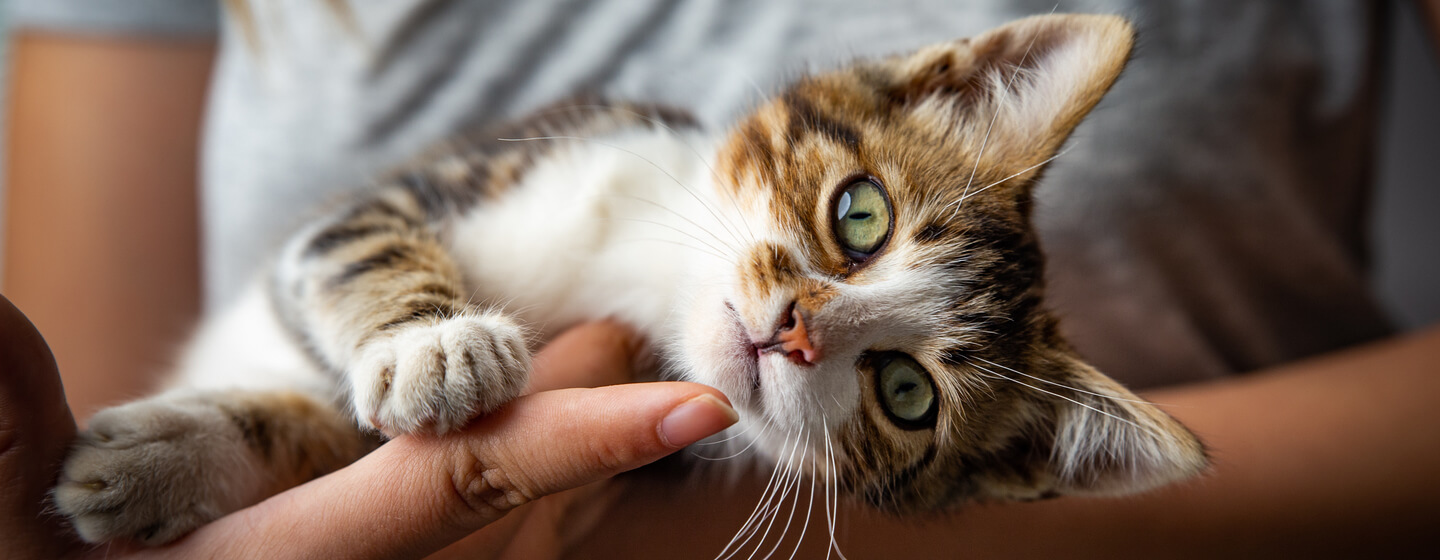
Despite the name, ringworm in cats has nothing to do with worms! It’s a fungal infection on the skin that needs to get treated as soon as possible to prevent spreading to other animals or even you.
Ringworm in cats is a highly contagious fungal infection of the skin. It is more common in kittens and long-haired cats, but it can affect any breed and age. It is also a zoonotic disease meaning it can spread to humans, particularly people who are immunocompromised.
Despite the name, ringworm is not actually caused by a worm at all, rather a group of fungi called dermatophytes and can be referred to by its medical name dermatophytosis. Due to the highly contagious nature of the condition, it’s essential that ringworm medication for cats is sought as soon as possible. If you suspect that your cat is suffering from ringworm, keep reading to find out what you should do.
What is ringworm in cats?
This common skin condition is a fungal infection which feeds on the keratin in a cat’s fur, skin and nails. It’s called ‘ringworm’ because the fungus creates circular ring-like lesions on your cats’ skin, usually associated with hair loss. It’s often found on the head, ears, along the ridge of the back and on the front legs, but they can be present anywhere on the body.
How do cats get ringworm?
Ringworm can be passed on through contact with infected cats. It can spread rapidly in multi-pet households as shedding hair and skin can contain infectious fungal spores. Ringworm is common among kittens as their immune systems are still developing and it also affects long-haired cats more because fungus gets trapped in the longer coat, making it harder to remove.
Symptoms of ringworm in cats
If your cat displays symptoms of the following, they may have a ringworm.
- Ring-like lesions on your cat’s skin.
- Scaly texture or dandruff in your cat’s coat.
- Circular, thickened patches of skin with hair loss.
- Sore, red and crusty patches.
Keep in mind that symptoms can vary from cat to cat. In order to guarantee an accurate diagnosis, you’ll need to take them to a vet.
Diagnosis for ringworm in cats
To diagnose ringworm in cats, your vet may conduct different tests. They may require a blood test, a sample of your cat’s fur, or an examination using a special UV lamp. However, the most reliable option is to take coat brushing samples from your cat for laboratory testing. While this option is generally the most accurate, you may have to wait up to two weeks for the results.
Ringworm treatment for cats
The most common treatment for ringworm in cats is anti-fungal medication paired with an antifungal shampoo for cats. Your vet may ask you to restrict your pet to rooms that are easy to clean because spores can be quickly spread throughout the home. For long-haired cats, your vet may also suggest a coat trimming so the antifungal shampoo can penetrate the skin easier.
Additionally, you’ll need to decontaminate your home to help treat ringworm in cats. This means removing any excess cat hair or skin that may contain fungal spores. You may need to vacuum your furniture and mop your hard floors with pet-friendly chemical disinfectants once a day. Beddings, brushes and toys which can’t be cleaned thoroughly must be thrown away to avoid re-infection.
These spores can live in your house for as long as 18 months, so you need to clean your home’s interior once a day to be completely rid of any ringworm infection. If you have other pets in the home, ask your vet whether they should also be treated. Never use medication prescribed for one animal on another pet as this can be very dangerous, particularly if they are different species.







